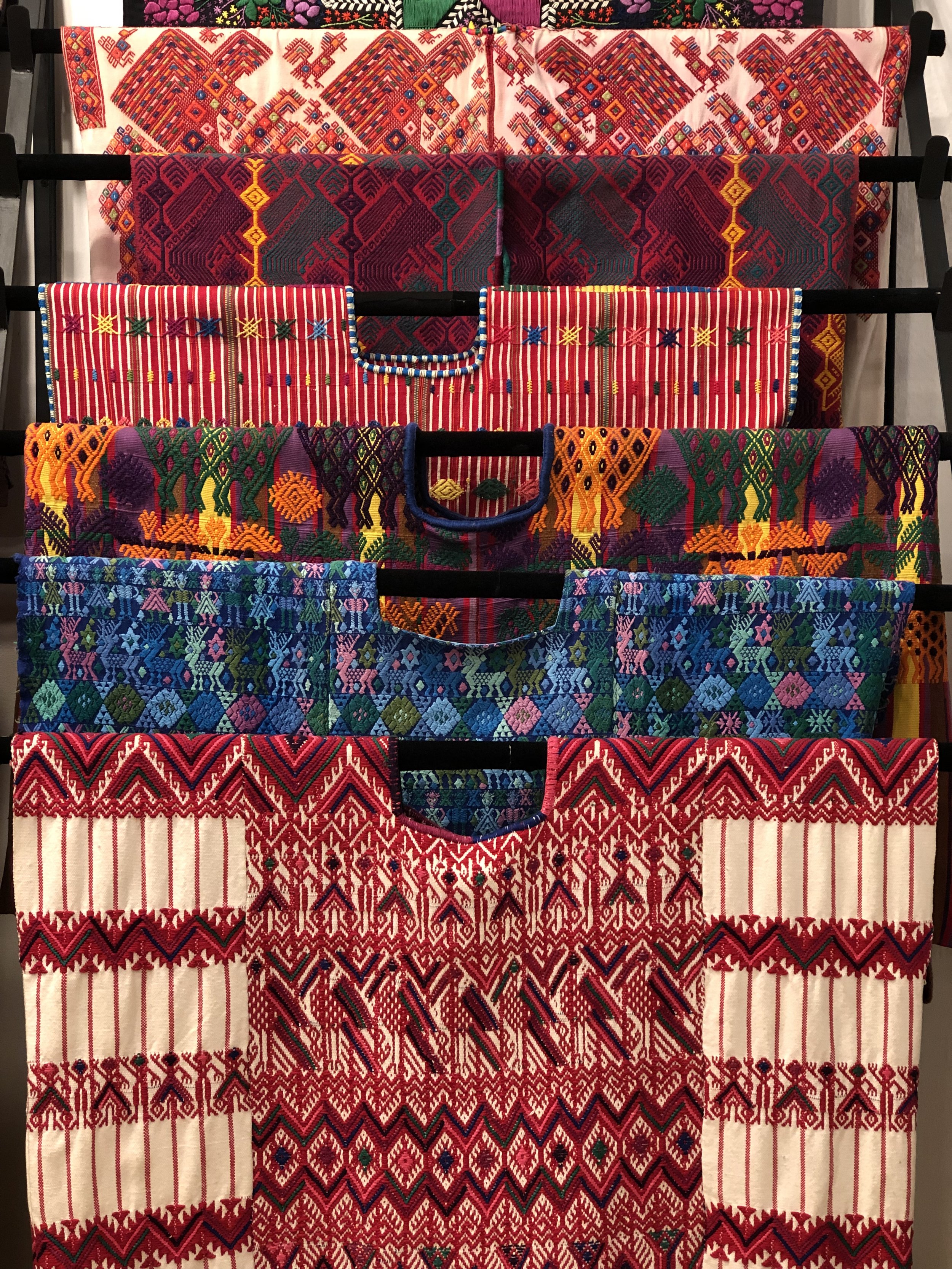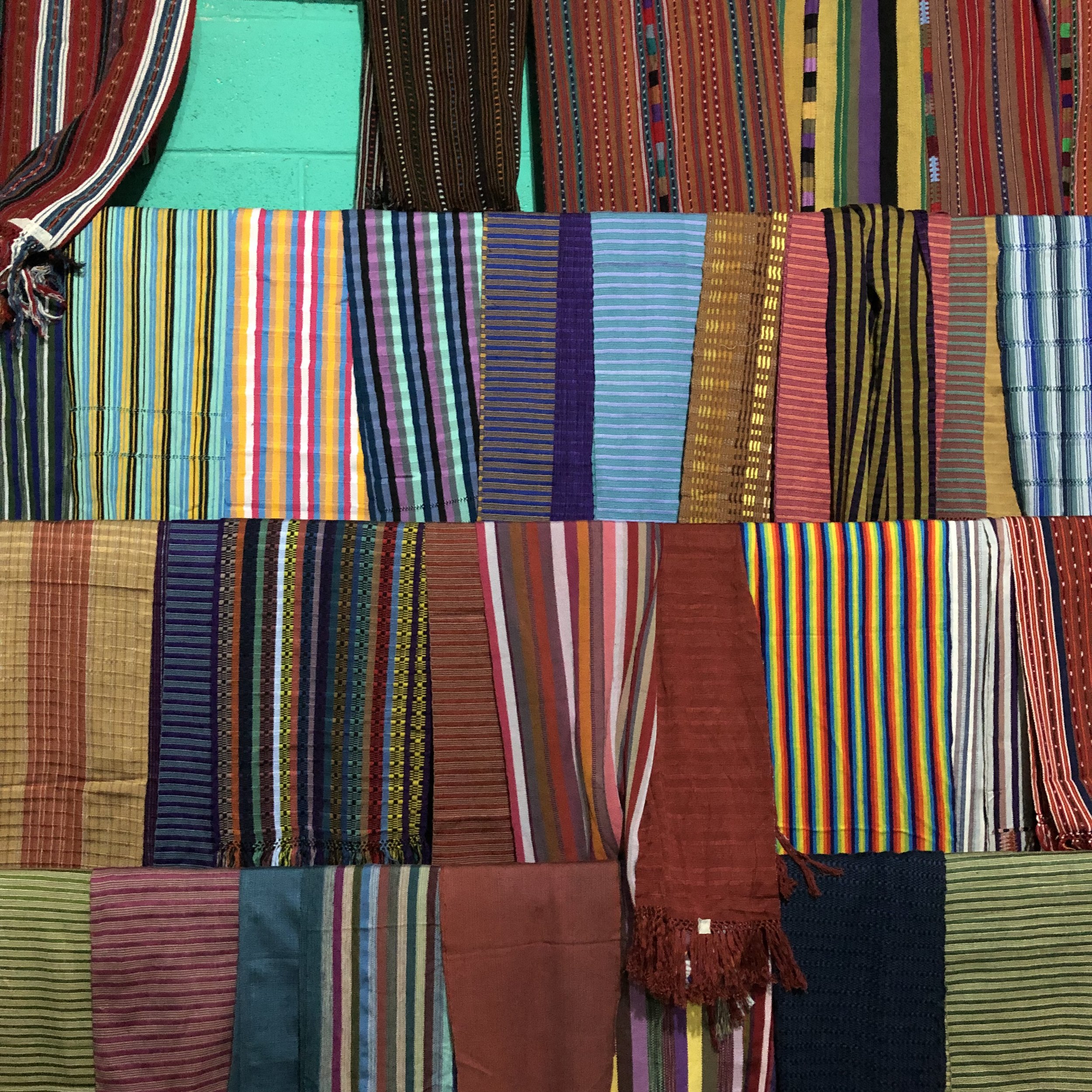The Spiritual Craft of Mayan Backstrap Weaving
Ixchel is the legend of the ‘Cosmic Weaver’ or the moon goddess of the Maya, weaving together the universe with her cosmic loom. Ixchel represents the power of the feminine, creation process — marking women as the creators of the world. She is pure feminine energy: overseeing the cycles of life, the tides of the ocean, childbirth, agriculture, creation of life and creativity.
Weaving is a practice of meditation, storytelling, sharing wisdom and knowledge, and connecting the ancestral lines. It is a spiritual craft that creates ‘stitches in time’ in the material world that connects the past, present and the future. It pays homage to the connection of the spirit and energy that runs through all living beings of the universe.
The tradition of weaving is symbolic of a woman’s birthright to create. In Guatemala and Mayan culture, 3-week old girls are bathed in a temazcal and gifted weaving instruments passed down from their family. Girls are taught at a young age how to weave and those skills are representative of their inherent gifts of storytelling and creation.
It is a cultural rite of passage; the skills are passed down from generation to generation, woman to woman. There is an ancestral line — a thread that connects generations of women past, present and future — all intertwined and coming full circle. Weaving together family, community, the universe. The craft honors that birthright and translates the sacred into an everyday meditative practice.
Each woven piece is a living, breathing expression of that ancestral line. Each generation building on the next; each one a unique expression from one’s soul but still continuing the story of their culture and ancestors.
The styles, colors, patterns, motifs and traditions of weaving vary greatly between the indigenous Mayan communities across Mexico, Guatemala, Belize, Honduras and El Salvador. Each weaving style is representative of region and one’s identity within the context of his/her community.
In Guatemala, I toured several womens weaving collectives across the Guatemalan highlands and around Lake Atitlan — a major hub for indigenous Mayan communities — including the communities of San Juan La Laguna and San Antonio Palopo.
One of the collectives we visited was the Waxkaqchikan cooperative in Chuacruz, Guatemala. They shared their knowledge in weaving and it was also an opportunity to listen to their stories. Many of the women started and joined these collectives as a means of financial independence and survival. Some women who experienced hardship, abuse, outcast or loss their husbands or families formed these collectives through agriculture and weaving. Bringing together women in their communities.
It starts with the Milpa. The holy trinity of agriculture in Mayan culture: corn, beans and squash. The connection with the land is integral to one’s identity and way of living in indigenous societies. Maize or corn is sacred to the Maya as it is life giving. Mayan mythology tells stories of the first humans were made of corn. White corn was used for the bones, yellow corn for the muscles, black corn for the eyes and hair, and red corn for the blood. Agriculture, astronomy, and spiritual religion were interconnected. The Maya leveraged their studies in astronomy to perfect their agricultural cycles and planning.
Traditionally the thread is prepared using wool or cotton which is first beaten on a hide in a rhythmic drumbeat. Once beaten, the thread is spun using a spool and a bowl.
The yarn is then colored with natural dyes (from plants, insects, minerals).
E.g.
Cochineal (insect that is harvested from nopal paddles): red and pinks
Pericon (chamomile variety): yellows and oranges
Once dried, the thread is then spun onto spools and is organized on a warp board according to the mathematics and design of your woven piece.
The thread is then organized onto a backstrap loom. A backstrap loom is traditionally a handmade collection of rods and sticks, with a handmade leather or woven belt. The loom is fastened to a high point like a beam or tree and the other end around a person’s back to create tension in the threads.
For my piece I choose to create a simple 70-inch long scarf with alternating vertical stripes in variations of pericone orange and yellow with un-dyed cream thread, with a horizontal drop stitch.
Basic backstrap weaving instructions:
Stitch, Slide
1. The ‘shed’ is passed in between the top and bottom layers of vertical warp threads (vertical threads in cream, rust orange and yellow) and stands vertically to create an opening or space between the two layers.
2. The ‘needle’ with the horizontal weft threads (un-dyed cream thread) is passed between the two layers of the warp threads. Lay the shed flat.
3. The ‘heddle rod’ slides back and forth.
4. The ‘shed’ in re-inserted again right below the ‘heddle rod’ and you pull it downwards towards your waist to push the weft thread down and secure the stitch.
Stitch, Pull
1. Bring the shed back up and lay it vertically to create an opening again.
2. Pass the ‘needle’ with the horizontal weft thread through on the opposite side (you will alternate back and forth).
3. Remove the shed and use it to push the top shed down while using the other hand to pull up the ‘heddle rod’. Then pass the same shed underneath in the space created between the two layers.
4. Slide the ‘shed’ downwards to secure the stitch.
Repeat!
Beautiful views while weaving at Lake Atitlan!
The final product :)









































